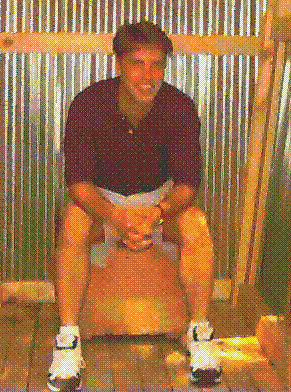 Rob's Rob's
|
|
During our study of plate tectonics I learned many things, the following
is a grouping of terms and processes that I think are easy follow in the
understanding of how are earth is shaped and developed.
* Divergent Plates - These plates are moving apart from one another. These are the new growth areas of the tectonic system. These plates are usually associated with a ridge, at this ridge lava from deep down in the earths mantle flows upward toward the surface, this new mass of lava must release pressure and in doing so moves the plates apart. The farther you move away from a ridge the older the rock becomes. A prime example of this is the mid-atlantic ridge.
* Convergent Plates - These plates are coming together. Pressure applied to the plate at the divergent plates or ridge pushes the plate against another forming an area in which the plates collide. This in turn creates pressure in this area. In some cases this pressure is released in what is called a subduction zone. In a subduction zone the less dense plate (usually a ocean plate) is pushed downward while the more dense plate (usually a continental plate) is pushed over the less dense plate. As the material from the less dense plate dives downward deeper into the earths crust it is melted back into magma. Because the ocean plate is moving downward it creates a deep crevice known as a trench. Earthquakes occur along the continental side of the trench. These earthquakes occur because of the rubbing of the two continents against one another. Farther inland away from the trench the melted magma which was created by the melting of the ocean plate, resurfaces in the form of volcanic activity. An example of a convergent plate occurs along the nazca plate and the South American plate. An exception to this situation occurs in the Himalayan mountains. Here the Indian ocean plate and the Asian plate are converging, but instead of the formation of a subduction zone and trench, they form a mountain range. This is achieved by the two converging plates releasing pressure as they buckle and fold against each other. In a situation like this the volcanic activity is less active.
* Hot Spots - Hot spots are areas in which volcanic activity occurs
in the middle of a plate. In a hot spot magma from deep in the earths crust
is thrusted upward through the plate. As the magma or lava breaks through
the crust it forms a small mountain. As time progresses the lava keeps
building the mountain larger and larger till finally the mountain is so
big and tall that it breaks through the ocean surface and forms an island.
An example of this is occurring in the Hawaiian Islands.
Click here for more links about plate tectonics.
Click here for links on exploring the insides of a volcano.
 Rob's Rob's
|
|